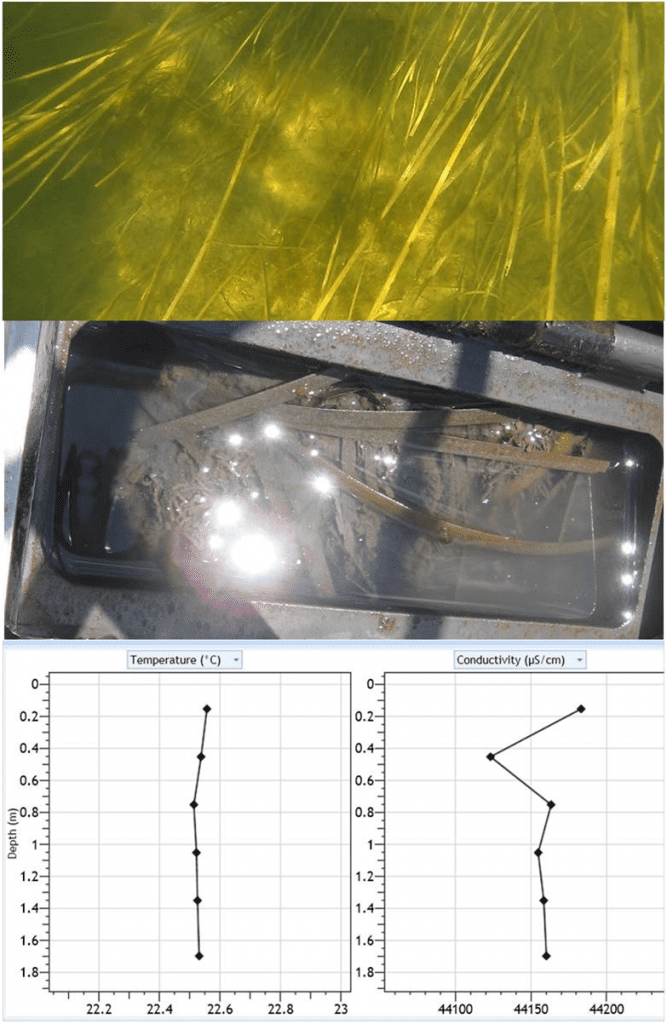Field and Laboratory Work
Ground truth samples are taken at randomly distributed sites throughout a particular estuary in order to complement the highly detailed bathymetry and sonar data. These samples collect water column data (depth, temperature and conductivity), substrate data (sediment grain size and organic content) and most importantly, biological data (marine macroinvertebrate communities).

CCS biologist Cristina Kennedy and Dr. Megan Tyrell collect a benthic sample using a Young Modified Van Veen Grab Sampler.
The sediment and biological samples are collected using a Young Modified Van Veen grab sampler loaned to the Center by the Woods Hole Oceanographic Institute (WHOI). Water column data are collected using a YSI Castaway™ CTD which is lowered to the seafloor and collects conductivity, temperature and depth data as it is raised back up to the surface. Video of the seafloor at a sample site is collected using a GoPro™ camera (view a video of an eelgrass sample taken in Pleasant Bay).
Three biological samples (replicates) are taken at each site to characterize the marine invertebrate community. The grab sampler collects about 4 liters of substrate in one sample and everything is rinsed through a 1 millimeter mesh sieve. All fine sediment, mud and invertebrates smaller than 1 millimeter go through the sieve and the remaining substrate and larger “macroinvertebrates” are transferred to a container and preserved in alcohol.

Data collected in the field include videos of the seafloor bottom (top), photographs of the grab surface (middle), and water column conductivity, depth and temperature information.
In the Lab
The preserved biological samples collected in the field contain a large amount of important data, but to get this data these samples must be carefully processed. Lab work is conducted at the Cape Cod National Seashore North Atlantic Coastal Lab in Truro, MA.
The first step in the lab is to “pick” the samples. This involves carefully going through each sample and separating all marine invertebrates from the substrate (sand, detritus, rocks or shells). As the invertebrates are removed they are sorted by naked eye into major categories (amphipods, shrimp, bivalves, worms etc.).

CCS research assistant Katrina uses a dissecting microscope to count and identify preserved macroinvertebrates.
Once all invertebrates have been removed from the substrate the sorted invertebrates are then more closely examined using a dissecting microscope. All invertebrates are counted and identified to species if possible. In Pleasant Bay we have counted over 25,000 invertebrates representing 80 different species. This raw data will be analyzed to summarize the biological characteristics of sampling sites and how they are related to the physical environment.
Click on the images below to learn more about benthic habitat mapping

Our Work
Humpback Whale Research
Right Whale Research
Marine Animal Entanglement Response
Marine Geology Department
Water Quality Monitoring Program
Marine Fisheries Research
Seal Research
Shark Research
Marine Education
Interdisciplinary
Marine Debris and Plastics Program
Marine Policy Initiative
Cape Cod Climate Change Collaborative
Publications






